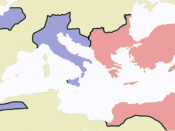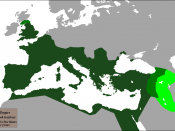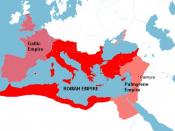Did the Roman Empire really fall? What would later be known as the Byzantine Empire wasn't just an extension of the Roman Empire; it was part of the empire itself that flourished for nearly another millennia. The Western Roman Empire simply declined into a state of existence that made it vulnerable to invaders and was eventually overran by barbarian tribes. Rome had essentially been declining since 180 AD when civil wars occurred up until 285 AD and a plague had killed an estimated one-fourth of the population. The Roman Empire was slowly transforming into something foreign. The military was beginning to become decentralized and immobilized starting with the Emperor Hadrian. Foreigners loyal to powers other than the emperors were becoming the majority of the military. Since there was no clear rule for succession of emperors, the throne was left to anyone who had the might to take it. This ultimately turned into military and the praetorian choosing who would become the next ruler.
Political, economic, social, religious, even health problems led to the decline and eventual "fall" of the Western Roman Empire by 476 AD. However, the Eastern Empire would survive the upheaval of the 4th century because of its larger population, better emperors and more money.
"But the decline of Rome was the natural and inevitable effect of immoderate greatness. Prosperity ripened the principle of decay; the causes of destruction multiplied with the extent of conquest; and, as soon as time or accident had removed the artificial supports, the stupendous fabric yielded to the pressure of its own weight.... " The constant warfare of the 1st and 2nd centuries AD of the Romans eventually backfired against the empire. As the conquests began to cease during the 2nd century AD, the consistent plunder and slaves began to dwindle. During the...


